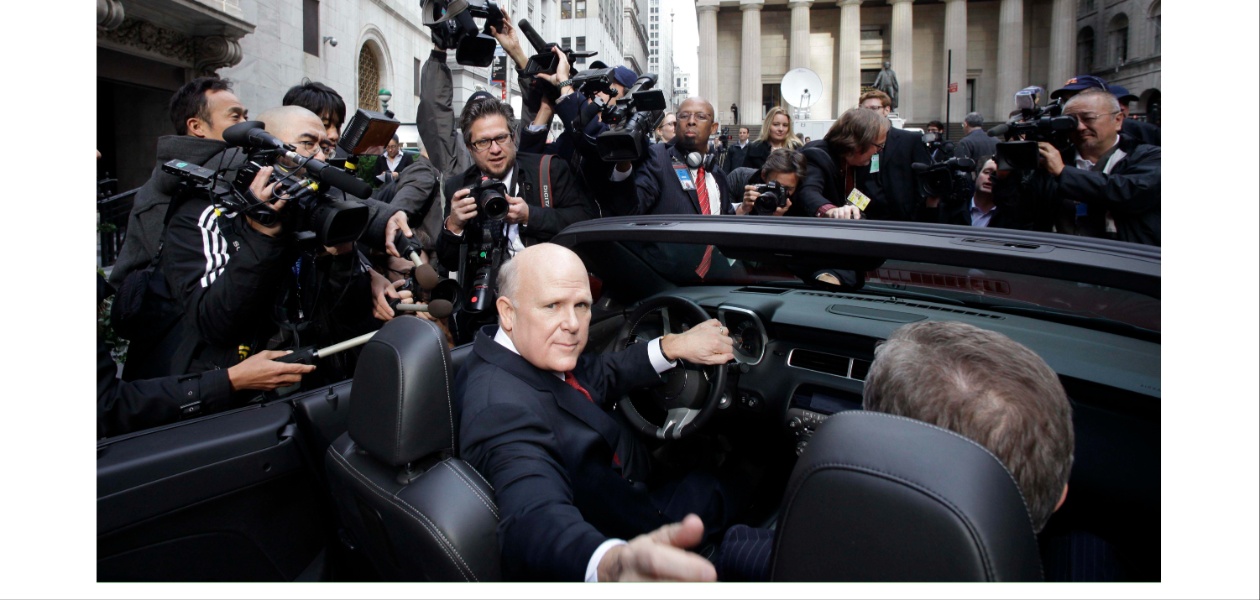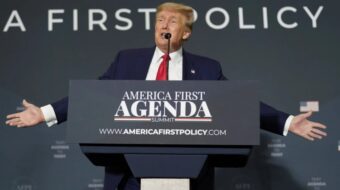
$250 billion in profits accumulated since 2013. That’s $1.7 million made off of each and every one of the workers covered by the UAW collective bargaining agreement.
Instead of paying out any of that largesse in the form of higher wages for the workers who created that value, the CEOs of the Big Three have awarded themselves and their co-conspirators ever-more lavish salaries.
Paychecks for the bosses of the Big Three have increased 40% since 2013. General Motors CEO Mary Barra, a favorite on cable news and in airport book stalls, who said she was “extremely frustrated and disappointed” by the UAW strike, makes $29 million per year. With less name recognition, Ford CEO Jim Farley demands a more modest $21 million. For Stellantis CEO Carlos Tavares, it’s $25 million.
These salaries are at least 300 times the wages paid to rank-and-file employees at GM, Ford, and Stellantis.
It’s no secret that the Big Three have seen a major swing back toward profitability since the 2008 crisis in the automobile industry. Government bailouts and worker givebacks are what kept them afloat after executives almost ran the companies into the ground, and the turnaround has been plain for all to see. Politicians from Obama to Trump have touted the “comeback” of the auto industry at every possible opportunity.

While the auto manufacturers have returned to making money, and even expanded their rate of profit, workers at these companies have seen their share of the value dwindle.
Real wages in the auto industry have in fact fallen more than 19% since the 2008 crisis. Workers up and down the picket line at the Toledo Assembly Complex reported living paycheck to paycheck. It’s desperation that keeps these workers coming back for another shift, and it is their dedication to each other that brings them out to the picket line.
The success of these publicly traded businesses is predicated on the details to be found in their quarterly financial reports, which are freely available. Institutional stockholders review these numbers with a singular aim: determining which companies will generate the greatest return on investment.
As they compete for these giant infusions of cash, it’s clear why the auto companies stick to a profits-first logic. It also becomes clear why this makes them totally subservient to finance capital.
From 2013 to 2022, profits at the Big Three automakers increased 92%, totaling the aforementioned $250 billion. They expect to add yet another $32 billion in profits to the pile in 2023.
The business elite who sit on the Big Three Boards of Directors—many of whom also occupy seats on the boards of other companies with competing and interdependent financial interests—get to call the shots on what to do with all of these funds. Yes, they pay themselves higher salaries, but with a windfall of $250 billion, even their obscene paychecks are a drop in the ocean of corporate profits.
Spending public money while funneling profits back to Wall Street
The auto industry faces long-term challenges, to be sure, as technological developments necessitate a shift away from manufacturing internal combustion vehicles toward the electric. This will require large-scale investments in infrastructure upgrades to build modern production facilities. So, that would seem a logical place to direct some of those hefty profits, right?
But here, the federal government has stepped in with funds via the 2022 Inflation Reduction Act, which provides tax credits and government-backed low-interest loans to fund the transition to EV manufacturing. Automakers will receive a further boost through consumer tax credits for—money used to entice consumers for the purchase of EVs, thus increasing demand and resulting in extra profits for automakers.
Government assistance with technological investments will offset the cost of protecting the long-term position of the industry. This frees up funds for more immediate uses: dividend payments and stock buybacks.
Dividends are the direct distribution of profits to shareholders in the form of cash payments. Stock buybacks are the use of company profits to buy up large portions of the company’s stock from the market. In theory, this reduces the supply of that stock in the marketplace, creating upward momentum in the stock price and raising share value for investors.
Since 2013, Ford, GM, and Stellantis have diverted $66 billion in profits to dividend payments and stock buybacks. That’s $66 billion in profits generated by workers that didn’t go to wages or investments in the company’s future but were instead paid out directly to investors.
Who actually owns all these shares? Who is it that Big Three CEOs and the Boards of Directors seem so eager to please? Certainly, corporate leaders themselves own significant amounts of stock, thus receiving big personal payouts on top of their actual paychecks every time they increase stock buybacks and dividend payments.
But again, as with CEO salaries and total profits, CEOs directly account for only the tiniest sliver of the overall stock value.
By following the trail of investors, we see the dominance of financial interests over the heavy industry of the Big Three automakers most clearly. The Vanguard Group owns the largest share of stock in both Ford and GM, at 8.19% and 7.58%, respectively. BlackRock Fund Advisors is next, again owning huge proportions of shares in both Ford (5.04%) and GM (4.76%).
Stellantis is more diversified among multiple international finance interests, including the Dutch Exor NV holding company, the Peugeot Family, and other French and Chinese interests. Yet even here, the U.S.-based American Vanguard and Citigroup maintain significant holdings.

And make no mistake, these are controlling stakes. Although an 8% stake in Ford by Vanguard is far short of the 51% required for literal direct control of the company, withdrawal of Vanguard’s stake would spell certain disaster for Ford Motor Company. By holding control of the single largest portion of shares, Vanguard maintains significant leverage over the company’s decisions. The same can be said for Vanguard and GM or the relationship between BlackRock and its investments.
We also see that Vanguard and BlackRock are in a position to pose their investments against each other to create pressure on both companies to maximize profits for their owners. In the end, both Ford and GM are only two rows on a vast spreadsheet of Vanguard’s global portfolio. Portfolio managers at Vanguard or BlackRock (or any other of the mass of companies in this empire of high finance) will readily move money out of one investment and into another in order to maximize return, paying no heed to workers laid off, factories shuttered, and lives upended in their wake.
Like Cinderella’s stepmother, Vanguard or BlackRock can withhold money from one daughter while showering investments on another. If Ford increases its dividend or buys back stock, GM had better follow suit or risk the wrath of its cruel stepmothers at Vanguard and BlackRock withdrawing affection and moving money to a more immediately lucrative investment.
Corporate leadership sees all of this clearly; they have been selected for exactly this purpose. They behave like the loyal servants they are, servants to finance capital who will go to any lengths to deliver for their masters.
By striking against the Big Three, workers with the UAW have courageously stepped to the forefront of the class struggle. They challenge CEO pay raises off the backs of exploited workers. And they challenge the system by which the relentless and uncaring drive for profit supersedes human need. In the face of this monstrous greed, they have responded with community, solidarity, and compassion.
>>> READ MORE PEOPLE’S WORLD COVERAGE OF THE UAW STRIKE.
We hope you appreciated this article. At People’s World, we believe news and information should be free and accessible to all, but we need your help. Our journalism is free of corporate influence and paywalls because we are totally reader-supported. Only you, our readers and supporters, make this possible. If you enjoy reading People’s World and the stories we bring you, please support our work by donating or becoming a monthly sustainer today. Thank you!










